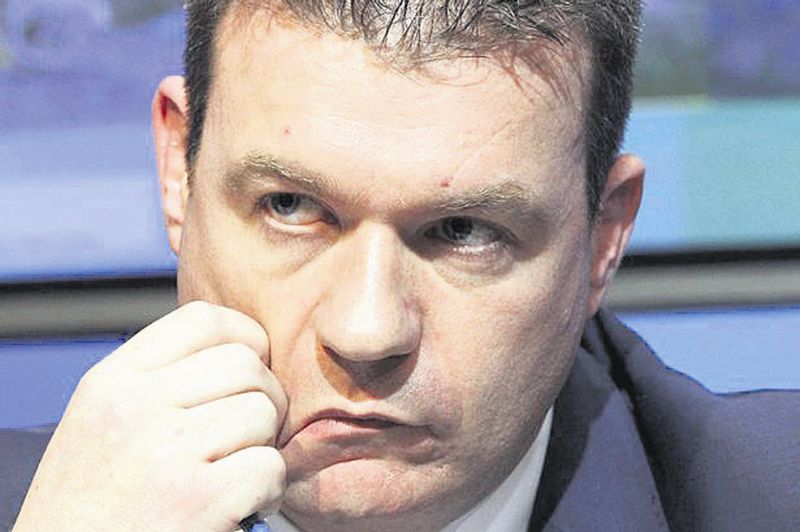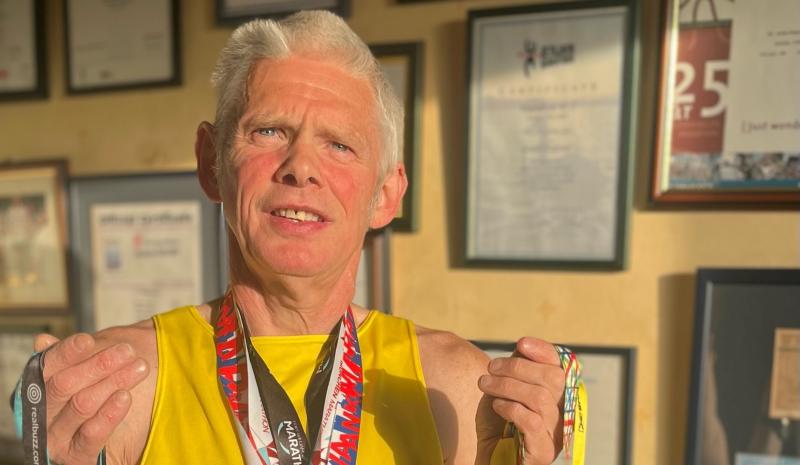News
Councils’ opposition to merger proposals for local authorities

A total of 45 submissions were accepted by the committee overseeing the local government review in Galway before the deadline closed.
The review was set up by the Minister for the Environment, Community and Local Government Alan Kelly to “carry out an objective review of local government arrangements in Galway City and County, including the boundary of Galway City, the local government areas and the local authorities for such areas, and to make recommendations for improvements in such arrangements”.
In its lengthy submission, Galway City Council concluded there was no evidence to suggest that a merger of the two local authorities would result in a more efficient entity or any improvement to service delivery.
“Further it is considered that any amalgamation could impact negatively on the current success of the city through a diluted focus, which would negatively impact on the county and on the region,” the submission stated.
City Hall held consultation meetings with councillors and there was consensus that a case for a limited and targeted extension to the city/county boundary, specifically in the areas of Ardaun and Parkmore. The potential for further extension of the boundary to incorporate Barna or Oranmore was discussed but opinions different.
“There is merit in examining the current shared services in terms of efficacy and value for money and also in considering the business case for additional services to be delivered by either authority on behalf of both,” the City Council contended.
The submission highlights the experiences abroad, including Queensland, Australia and Canada to bolster its case.
In Queensland there was reduction in councils from 156 to 72 and a reduction of Aboriginal Councils from 32 to 14, resulting in over 700 fewer representatives. Following public disquiet and the election of a new state government, former authorities were invited to apply to de-amalgamate. Some 19 submissions were received but only four were considered viable and these authorities were de-amalgamated upon further legislation in January 2014.
Galway County Council’s submission criticises the pretext of the review.
The Minister stated that “it is logical also to consider the option of unifying the city and county structures in Galway not least because of the potential of a stronger Galway authority to reinforce the process of economic recovery and growth, not only in Galway but in the West generally”.
“There is therefore a concern that these statements reflect a predetermined preferred solution. It is generally accepted that the issues which pertained in Waterford, Limerick and Cork are not replicated in Galway and therefore the question must be asked as to what problem this review is seeking to solve,” the County Council submission remarked.
“It would appear that there is no evidence of unhelpful competition, policy fragmentation or a lack of coherence between the two remaining local authorities in Galway and therefore it is not clear what problem any merger would solve but it would appear that there are real risks of creating other problems if this option were to be pursued.”
It pointed to the dissolution of three town Councils in Ballinasloe, Loughrea and Tuam and the setting up of five municipal districts over a short period of time. This had left no opportunity for the changes to be fully implemented and their success or otherwise analysed prior to a substantial review of local government in Galway City and County.
“This is in the context of a recent suggestion that the abolition of Town Councils was a mistake.”
However not all submissions were negative.
The Galway Chamber of Commerce voiced its support for an amalgamation, claiming it would be an unprecedented opportunity to “give rise to a unique and powerful engine of growth and prosperity for a new Galway”, headed by an elected mayor who would serve a five-year term.
NUI Galway said it would be in favour of a merger, arguing it “would be useful but not essential to deal with one authority in respect of the totality of our developments on the main campus and at outreaches centres elsewhere in the county”.
It also pointed to the N6 bypass project – which impacted on its campus – as a reason for a complete overhaul.
“A single authority for Galway, coupled with a strong Regional Authority for the west could have produced a less divisive process and perhaps a more acceptable outcome.”
The committee chaired by Professor Eoin O’Sullivan, head of the school of social work and social policy in Trinity College Dublin, are expected to publish the outcome of their review by October.
Connacht Tribune
West has lower cancer survival rates than rest

Significant state investment is required to address ‘shocking’ inequalities that leave cancer patients in the West at greater risk of succumbing to the disease.
A meeting of Regional Health Forum West heard that survival rates for breast, lung and colorectal cancers than the national average, and with the most deprived quintile of the population, the West’s residents faced poorer outcomes from a cancer diagnosis.
For breast cancer patients, the five-year survival rate was 80% in the West versus 85% nationally; for lung cancer patients it was 16.7% in the west against a 19.5% national survival rate; and in the West’s colorectal cancer patients, there was a 62.6% survival rate where the national average was 63.1%.
These startling statistics were provided in answer to a question from Ballinasloe-based Cllr Evelyn Parsons (Ind) who said it was yet another reminder that cancer treatment infrastructure in the West was in dire need of improvement.
“The situation is pretty stark. In the Western Regional Health Forum area, we have the highest incidence of deprivation and the highest health inequalities because of that – we have the highest incidences of cancer nationally because of that,” said Cllr Parsons, who is also a general practitioner.
In details provided by CEO of Saolta Health Care Group, which operates Galway’s hospitals, it was stated that a number of factors were impacting on patient outcomes.
Get the full story in this week’s Connacht Tribune, on sale in shops now, or you can download the digital edition from www.connachttribune.ie. You can also download our Connacht Tribune App from Apple’s App Store or get the Android Version from Google Play.
Connacht Tribune
Marathon Man plans to call a halt – but not before he hits 160 races

On the eve of completing his 150th marathon, an odyssey that has taken him across 53 countries, Loughrea’s Marathon Man has announced that he is planning to hang up his running shoes.
But not before Jarlath Fitzgerald completes another ten races, making it 160 marathons on the occasion of his 60th birthday.
“I want to draw the line in 2026. I turn 57 in October and when I reach 60 it’s the finishing line. The longer races are taking it out of me. I did 20 miles there two weeks ago and didn’t feel good. It’s getting harder,” he reveals.
“I’ve arthritis in both hips and there’s wear and tear in the knees.”
We speak as he is about to head out for a run before his shift in Supervalu Loughrea. Despite his physical complaints, he still clocks up 30 miles every second week and generally runs four days a week.
Jarlath receives injections to his left hip to keep the pain at bay while running on the road.
To give his joints a break, during the winter he runs cross country and often does a five-mile trek around Kylebrack Wood.
He is planning on running his 150th marathon in Cork on June 4, where a group of 20 made up of work colleagues, friends and running mates from Loughrea Athletics Club will join him.
Some are doing the 10k, others are doing the half marathon, but all will be there on the finishing line to cheer him on in the phenomenal achievement.
Get the full story in this week’s Connacht Tribune, on sale in shops now, or you can download the digital edition from www.connachttribune.ie. You can also download our Connacht Tribune App from Apple’s App Store or get the Android Version from Google Play.
CITY TRIBUNE
Galway ‘masterplan’ needed to tackle housing and transport crises

From the Galway City Tribune – An impassioned plea for a ‘masterplan’ that would guide Galway City into the future has been made in the Dáil. Galway West TD Catherine Connolly stated this week that there needed to be an all-inclusive approach with “vision and leadership” in order to build a sustainable city.
Deputy Connolly spoke at length at the crisis surrounding traffic and housing in Galway city and said that not all of the blame could be laid at the door of the local authority.
She said that her preference would be the provision of light rail as the main form of public transport, but that this would have to be driven by the government.
“I sat on the local council for 17 years and despaired at all of the solutions going down one road, metaphorically and literally. In 2005 we put Park & Ride into the development plan, but that has not been rolled out. A 2016 transport strategy was outdated at the time and still has not been updated.
“Due to the housing crisis in the city, a task force was set up in 2019. Not a single report or analysis has been published on the cause of the crisis,” added Deputy Connolly.
She then referred to a report from the Land Development Agency (LDA) that identified lands suitable for the provision of housing. But she said that two-thirds of these had significant problems and a large portion was in Merlin Park University Hospital which, she said, would never have housing built on it.
In response, Minister Simon Harris spoke of the continuing job investment in the city and also in higher education, which is his portfolio.
But turning his attention to traffic congestion, he accepted that there were “real issues” when it came to transport, mobility and accessibility around Galway.
“We share the view that we need a Park & Ride facility and I understand there are also Bus Connects plans.
“I also suggest that the City Council reflect on her comments. I am proud to be in a Government that is providing unparalleled levels of investment to local authorities and unparalleled opportunities for local authorities to draw down,” he said.
Then Minister Harris referred to the controversial Galway City Outer Ring Road which he said was “struck down by An Bord Pleanála”, despite a lot of energy having been put into that project.
However, Deputy Connolly picked up on this and pointed out that An Bord Pleanála did not say ‘No’ to the ring road.
“The High Court said ‘No’ to the ring road because An Bord Pleanála acknowledged it failed utterly to consider climate change and our climate change obligations.
“That tells us something about An Bord Pleanála and the management that submitted such a plan.”
In the end, Minister Harris agreed that there needed to be a masterplan for Galway City.
“I suggest it is for the local authority to come up with a vision and then work with the Government to try to fund and implement that.”















